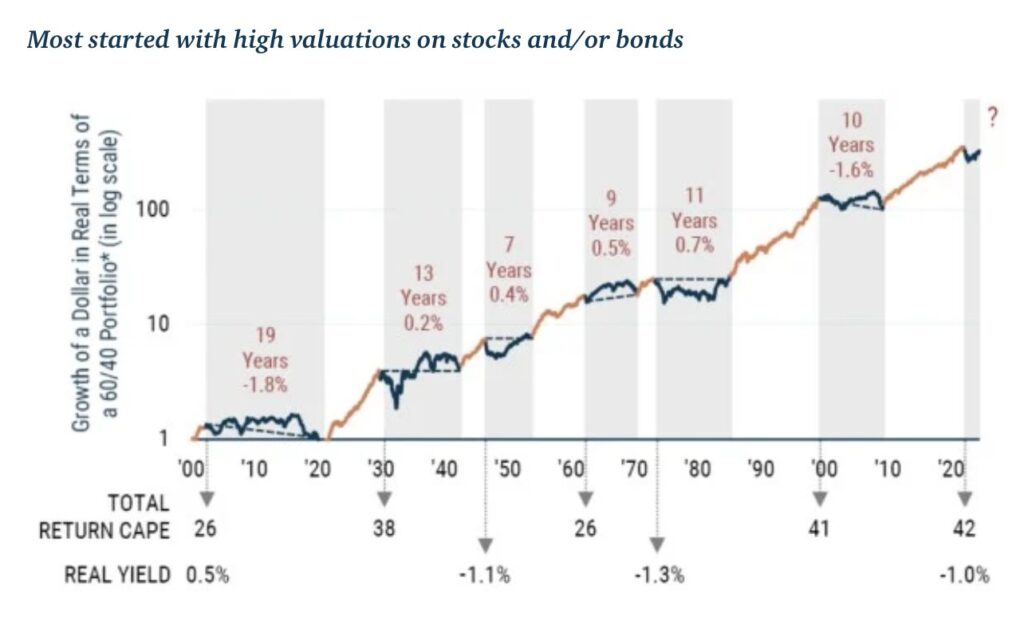For over a century, the 60/40 portfolio—60% equity and 40% bonds—has been a popular strategy in the U.S. financial markets. This strategy has seen its ups and downs. If you look at the data from the past 12 decades and adjust it for inflation, you’ll notice that there were several periods where this strategy did not deliver any real gains. For instance, between the early 1900s and 1920, from 1930 to 1943, and again from 2000 to 2010, the 60/40 portfolio remained stagnant in real terms.

Periods of No Growth
It’s important to recognize that even with a well-diversified portfolio, there have been long stretches in history where gains were hard to come by. People often expect to see positive returns every year, but history shows that there can be lengthy periods where the market stays flat or experiences only small growth. In contrast, when the gains do come, they tend to arrive in short, powerful bursts. This pattern reminds investors to adjust their expectations and be patient during times of stagnation.
The Importance of Adjusting Expectations
Many investors today have high expectations from the market, assuming they’ll see positive returns every year. However, the historical data from U.S. markets tells us that’s not always the case. While short bursts of significant growth are possible, long periods of little or no growth are equally likely. Investors need to keep this in mind, especially when planning for the long term. While the U.S. data may not apply perfectly to other markets like India, it’s a good reminder that global factors, such as a recession, could affect any market’s performance.
Reevaluating the 60/40 Portfolio
Traditionally, the 40% bond portion of the 60/40 portfolio was meant to balance risk and provide stability. But with bond yields staying low in recent years, this strategy might not work as well as it once did. Some experts believe it may be time to rethink this model, particularly by replacing bonds with gold. Gold, unlike bonds, has been gaining importance in the financial system, and many believe it can serve as a more reliable hedge against inflation and economic uncertainty.
Gold as a Key Portfolio Component
Gold is slowly being recognized as an important asset for modern portfolios. Many financial managers are starting to admit that they have overlooked its value for too long. With rising inflation and economic challenges, gold is becoming a more attractive option for investors. Some even predict that in the future, the 60/40 portfolio could shift to a 60/40 equity-gold model instead of equity-bonds. As more investors begin to recognize the potential of gold, this shift could become more common.
Disclaimers and disclosures : https://tinyurl.com/2763eyaz
If you have any questions, please write to support@weekendinvesting.com













